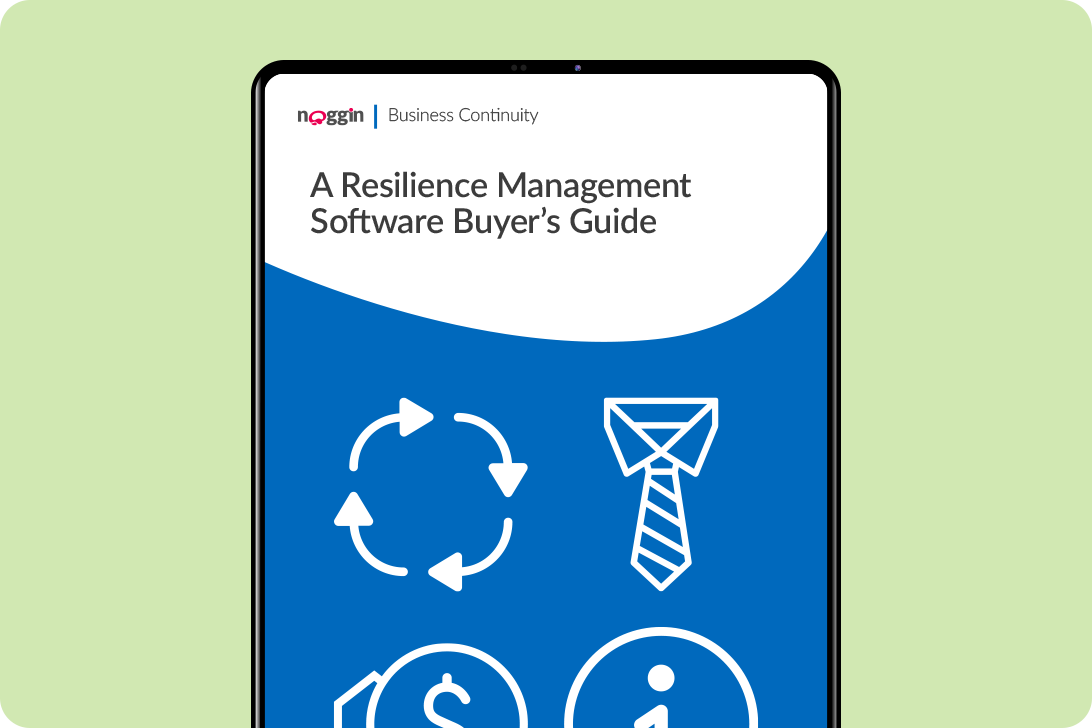Organizations today face a litany of challenges to resilience, with the popularity of the hybrid workforce fragmenting incident response, as well. What can be done to bet...
Request a Demo
Fill in the form below and we will contact you shortly to organised your personalised demonstration of the Noggin platform.
Meet Noggin
An integrated resilience workspace that seamlessly integrates 10 core solutions into one, easy-to-use software platform.
The Noggin Platform
The world's leading integrated resilience workspace for risk and business continuity management, operational resilience, incident & crisis management, and security & safety operations.
Industries
Explore Noggin's integrated resilience software, purpose-built for any industry.
The Noggin Blog
- Home
- security management
security management
Latest Articles
Mandatory Cyberattack Reporting: A Harbinger of the Future?
As cyberattacks increase will regulators demand mandatory cyberattack reporting?
In one sector, they likely will.
Which one? Read on to find out.
What is Crisis Communication? Crisis Communication Strategies
When crisis response goes awry, poor communication is often at fault. Poor communication typically takes any of the following forms:
- Withholding...
5 Reasons to Upgrade Your Emergency Management Platform
Organizations today face a litany of challenges to resilience, with the popularity of the hybrid workforce fragmenting incident response, as well....
Operational Risk Management: Overview & Guide
What’s one of the most significant risks businesses face today? That would be operational risk.
Don’t think so? Consider the fates of Enron,...
The Benefits of Operational Risk Management
Everyone knows that running a business involves risk. But not all risks are created equal.
Business leaders will encounter certain risks that are...
6 Types of Workplace Hazards
Workplace injuries and illnesses don’t come out of the blue. They’re often the product of workplace hazards that haven’t been successfully...
BCM Lifecyle: 6 Stages of the Business Continuity Lifecycle
In the age of constant crisis, companies understand the importance of business continuity in continuing the delivery of products or services...
What Clients Should Know about Effective Governance of Operational Resilience (OpRes)
Interest in operational resilience has no doubt boomed among your clients, whether they’re in a heavily regulated industry or not. But an OpRes...
Strategies to Protect Critical Infrastructure in Times of Heightened Threat
Attacks on critical infrastructure assets are on the rise. And now, national publics are concerned. A staggering 81% of U.S. residents are worried...
6 Ways Business Continuity Management Software Can Prepare Your Organization for Any Disruption
Nowadays, disruption is a matter of when not if.
APRA CPS 230 is Final: Here’s what you should know
An independent statutory authority, the Australian Prudential Regulation Authority (APRA) supervises financial and related institutions across the...
Mandatory Cyberattack Reporting: A Harbinger of the Future?
As cyberattacks increase will regulators demand mandatory cyberattack reporting?
In one sector, they likely will.
Which one? Read on to find out.
Strategies to Protect Critical Infrastructure in Times of Heightened Threat
Attacks on critical infrastructure assets are on the rise. And now, national publics are concerned. A staggering 81% of U.S. residents are worried...
How the UK is scaling up preparedness for Terrorist Attacks
Over the last decades, the rise of DIY terrorist techniques has exposed the vulnerability of events, attendees, and the venues and public spaces...
Enhancing Situational Awareness with Data Alerts
Alert fatigue was the story of 2023. Data even confirmed that up to a quarter of intrusion alerts went uninvestigated. And users spend about half an...
Situational Awareness to Enhance Security Management
Security management covers all aspects of identifying your organization’s assets, followed by the development, documentation, and implementation of...
What is Security Management?
Have an enterprise? Then, you likely have people, facilities, data, and technologies that you’re responsible for. Collectively, these are your...
9 Risk Themes to Plan for in 2024
2023 is coming on an end. But what risks will the new year bring? For individual organizations, it might be too difficult to quantify.
That’s why we...
A Guide to Digital Operational Resilience for Security Managers
Security staffers have their hands full maintaining cyber resilience amidst a deteriorating cyber environment. But the jobs not done yet. There’s...
The Importance of Physical Security Information Management (PSIM)
In physical security management, we’ve traditionally built security apps and devices to respond to specific threats. What happens, though, when...
Physical Security Information Management (PSIM) Explained
When polled in 2022, most organizations reported seeing a steady or increasing level of physical security incidents. In this article, we discuss how...
What Is Threat Intelligence?
Ransomware is in the news. However, backdoors are actually the most common adversary action, according to the 2023 IBM-sponsored Threat Intelligence...
Six Stages of the Threat Intelligence Lifecycle
As the cyber threat intensifies, businesses have become ever more reliant on threat intelligence, or threat information that’s been aggregated,...




